It seemed for a long
time as though this day might never come, but we're finally able to
write about BlackBerry's recovery. After years of battling irrelevance,
making bad decisions and watching its market evaporate, the company
seems to have found a stable path. It has pivoted from being primarily a
handset maker to a provider of services for all platforms, and the
strategy seems to be working.
In terms of hardware BlackBerry has
narrowed its focus to business users and the enterprise, and is committed to staying out of the sub-Rs. 10,000 consumer market which it
clearly cannot compete in. Each product it now releases is crafted for a
specific audience and delivers exactly what is demanded of it - the
innovative BlackBerry Passport (Review | Pictures) is for those who demand top-notch quality and want
to stand out; the BlackBerry Classic (Review | Pictures) is for QWERTY loyalists who could never let
go, and now the BlackBerry Leap is for touchscreen natives who feel that there
might be something better out there than the current status quo.
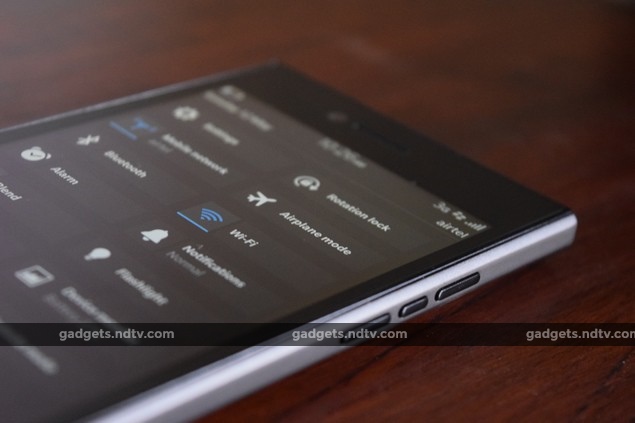
In
identifying specific niches and refusing to play the price and
popularity games, BlackBerry is missing out on the mainstream. However,
it knows that there are a lot of people who want to be better and more
responsive at work, and there are companies that are willing to pay good
money to ensure their communications are secure.
So with full
knowledge that the brand new BlackBerry Leap is not meant for
value-conscious mainstream buyers, we embark on our review.
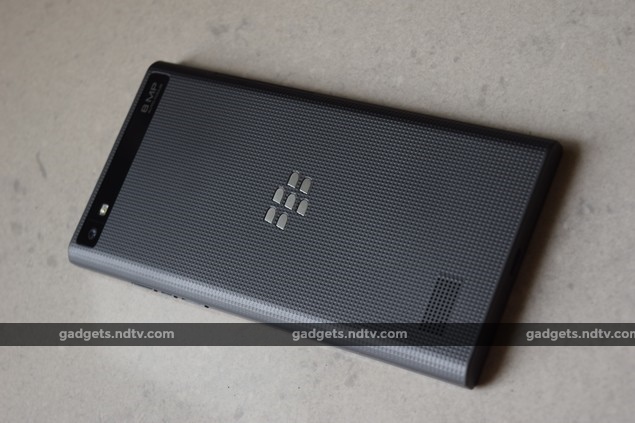
Look and feel
The
BlackBerry Leap is an elegant phone, with a slick black front face and
strong lines. There's nothing to see with the screen off except a bright
silver company logo on the bottom. The sides and back have a very
grippy rubber finish which contributes to the overall premium feel. You
can't take the back off, so the battery is inaccessible. The only part
of it that we didn't like was the huge "8 MP auto focus" label printed
near the rear camera which seemed out of place on an otherwise sober,
professional-looking device.
The Leap is strikingly similar to
last year's BlackBerry Z3 (Review | Pictures) model, and if you didn't know exactly where to
look you wouldn't be able to tell the two apart. The Leap is only a few
millimetres wider and a few grams heavier, but little things are
different, such as the power button being on top rather than the side,
and the SIM and microSD card flap swapping places with the volume
controls, which are now on the left and right sides respectively.
There's still a 3.5mm audio jack on top and a Micro-USB port on the
bottom.
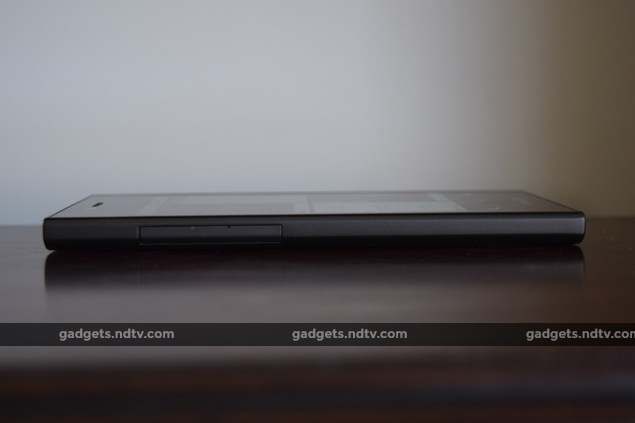
The Leap will be available in dark grey and white, and we
much prefer the former. It feels solid and reliable, though it is a bit
too large to use comfortably with one hand. Considering the Z3 was
launched only in a few Asian markets but was well received for its build
quality and style, it makes sense for the company to recycle the look.
What's surprising is that the Leap is not built by Foxconn as the Z3
was.
Specifications and software
The two phones have more in common than
just looks. While the Z3 was meant to be as affordable as possible (and,
in our opinion, cut too many corners to justify its price) the Leap is
not quite so constrained. The first thing we noticed was that the
display was much improved. The 720x1280 resolution isn't groundbreaking
for a 5-inch screen, but it's far better than the atrocious 540x960
screen of the Z3. Text is crisp enough and colours pop nicely without
being too harsh, which makes for a pleasant overall experience. Sunlight
legibility could have been a bit better, but things are okay as they
are.
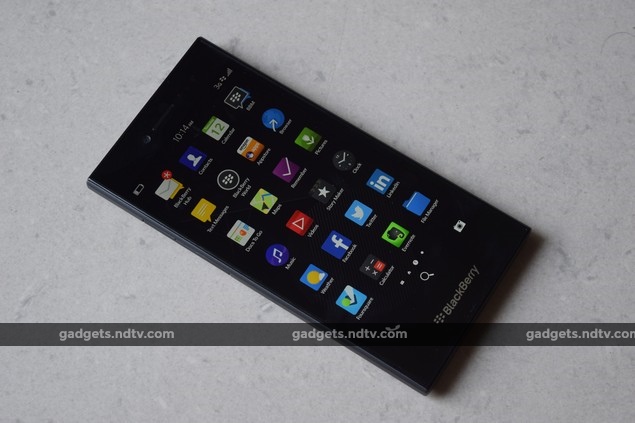
Unfortunately that's pretty much where the improvements end.
We are truly amazed that BlackBerry continues to use the now-ancient dual-core 1.5GHz
Qualcomm Snapdragon S4 Plus processor - MSM8960 to be precise - which
has been in use since the BlackBerry Z10 launched over two years ago. No
other company on the planet has such a long lifecycle, and if
BlackBerry wants to compete with similarly priced phones in terms of
performance, this is not the way to go.
The rest of the
specifications are somewhat modern, but definitely not high-end. There's
2GB of RAM, 16GB of internal storage, support for microSD cards of up
to 128GB, Wi-Fi b/g/n, and Bluetooth 4.0. Unfortunately, LTE is not
supported the 2300MHz Indian band. The non-removable battery has a rated
capacity of 2,800mAh. You get only a proximity sensor and a basic
accelerometer. Overall, we're unimpressed with BlackBerry's warmed-over
offering.
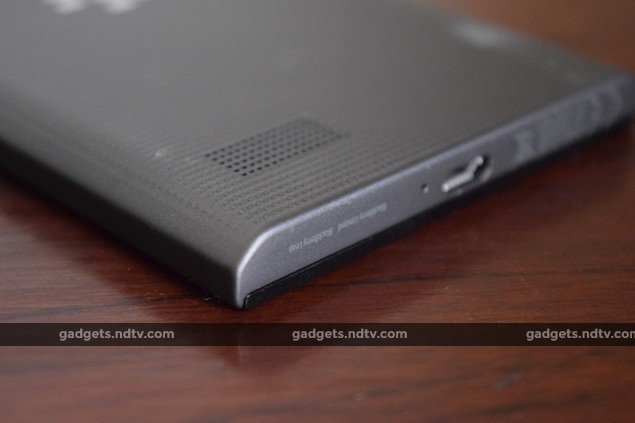
The company claims that the value of its platform lies
in software and services. As the only mobile handset player other than
Apple to control its hardware and operating system, BlackBerry hopes
that people will buy the Leap for its ability to help them get work
done. BlackBerry OS 10.3.1 has a lot of neat tricks including the
ability to run most Android apps and a central communications hub that
lets you quickly see your messages across services and react to them
quickly. We still aren't convinced that gestures are the most natural
way to get around a smartphone OS, but on the other hand the touch
keyboard is one of the best we've ever used.
Not much has changed
in terms of features since the Z3 was launched, so you can read all
about the platform in our review of that phone. One difference is that
the limit of four app tiles on the first menu page has been raised to
eight, most likely thanks to the increase in available RAM.
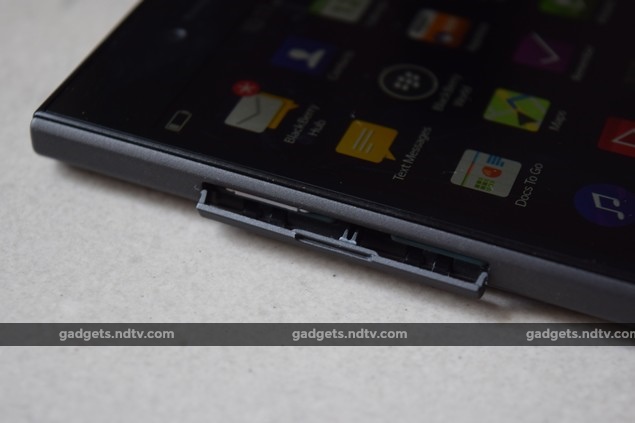
Performance
Predictably,
the BlackBerry Leap lagged a little in day-to-day use. There were
noticeable pauses when launching and switching between apps, and some of
the OS animations seemed to drag on just a bit too long. Flipping
around through the interface and using the Hub or other simple apps
didn't present any problem though.
Android benchmarks might run,
but wouldn't paint a true picture of this phone's capabilities. The
cross-platform browser-based SunSpider and Mozilla Kraken tests gave us
scores of 1284.8ms and 26889.7ms respectively, which are roughly what we
see from ultra-budget Android phones today.

(Click to see full size)
The battery lasted 7
hours, 19 minutes in our video loop test which is respectable but not
spectacular. That result represents about a full day's worth of
non-intensive usage, but the phone did seem to last longer than that in
the real world. Call quality was excellent.

(Click to see full size)
The camera is
surprisingly competent - not great, but definitely good enough for
casual shots now and then. Textures come out nicely and there's very
little noise and compression. The only thing it can't seem to handle
well is frames with subjects in motion. Even at night, we were pleased
with the photos we were able to take. Video is taken at 720p by default
and is sharp but a bit shaky.
Verdict
In terms of price
alone, the BlackBerry Leap is up against illustrious Android devices
such as the OnePlus One (Review | Pictures). Even Android phones at half
this price or less offer a competitive experience. You would really have
to be committed to the BlackBerry platform in order to justify a
purchase, and BlackBerry's biggest challenge will be to convince people
to give it a try.
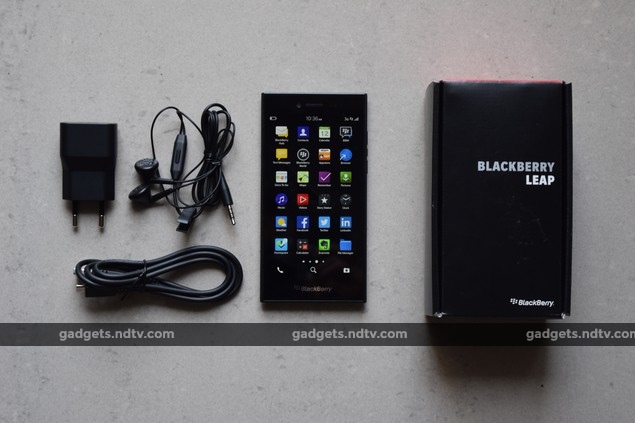
Thankfully, there definitely are people who are
that committed and even more who could be. The target audience is young,
non-QWERTY-bound professionals who see value in paying for a hardcore
business tool that could give them an edge, and this might be the right
smartphone for the job. There's also the chance that corporations
attracted by the prospect of secure communications and manageability
will buy them in large numbers for employees.
Even if the Leap is
only ever considered a secondary phone and only ever used for work,
BlackBerry still wins. That's enough to sell products, and is enough to
keep BlackBerry relevant. Sure, we would like to see the company get
aggressive and go for competitive mainstream pricing, but this is the
path it's chosen and at least it's still alive.
 BlackBerry Launches New 'Web-Based Facebook App' for BB10, BBOS Users30 March 2016
BlackBerry Launches New 'Web-Based Facebook App' for BB10, BBOS Users30 March 2016 After WhatsApp, Facebook Discontinues APIs for Blackberry; Company Responds21 March 2016
After WhatsApp, Facebook Discontinues APIs for Blackberry; Company Responds21 March 2016 BlackBerry 'Extremely Disappointed' With WhatsApp Decision to Ditch Its Platform18 March 2016
BlackBerry 'Extremely Disappointed' With WhatsApp Decision to Ditch Its Platform18 March 2016 BlackBerry Says Seeking Alternatives for WhatsApp Users; Suggests BBM7 March 2016
BlackBerry Says Seeking Alternatives for WhatsApp Users; Suggests BBM7 March 2016 BlackBerry Offers 20 Paid Apps Worth Over $30 for Free Over the Holidays21 December 2015
BlackBerry Offers 20 Paid Apps Worth Over $30 for Free Over the Holidays21 December 2015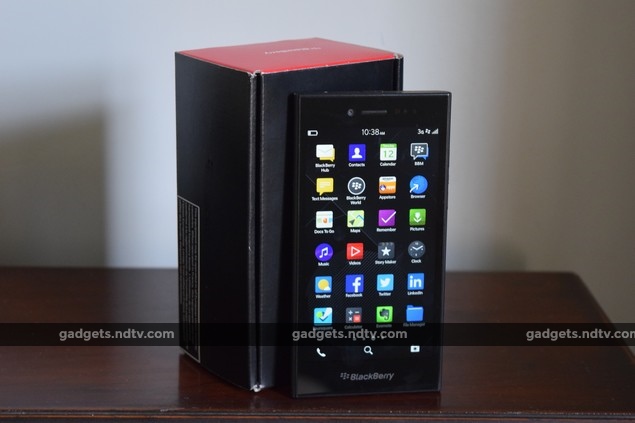


![[Sponsored] 10 Reasons to Buy Samsung Galaxy Book5 Series Laptops](https://c.ndtvimg.com/2025-03/6gg1i738_samsung-laptops_160x120_28_March_25.jpg?downsize=180:*)


![Gadgets 360 With Technical Guruji: Ask TG [ March 22, 2025]](https://c.ndtvimg.com/2024-12/5s52e4k_-ask-tg_640x480_14_December_24.jpg?downsize=180:*)










